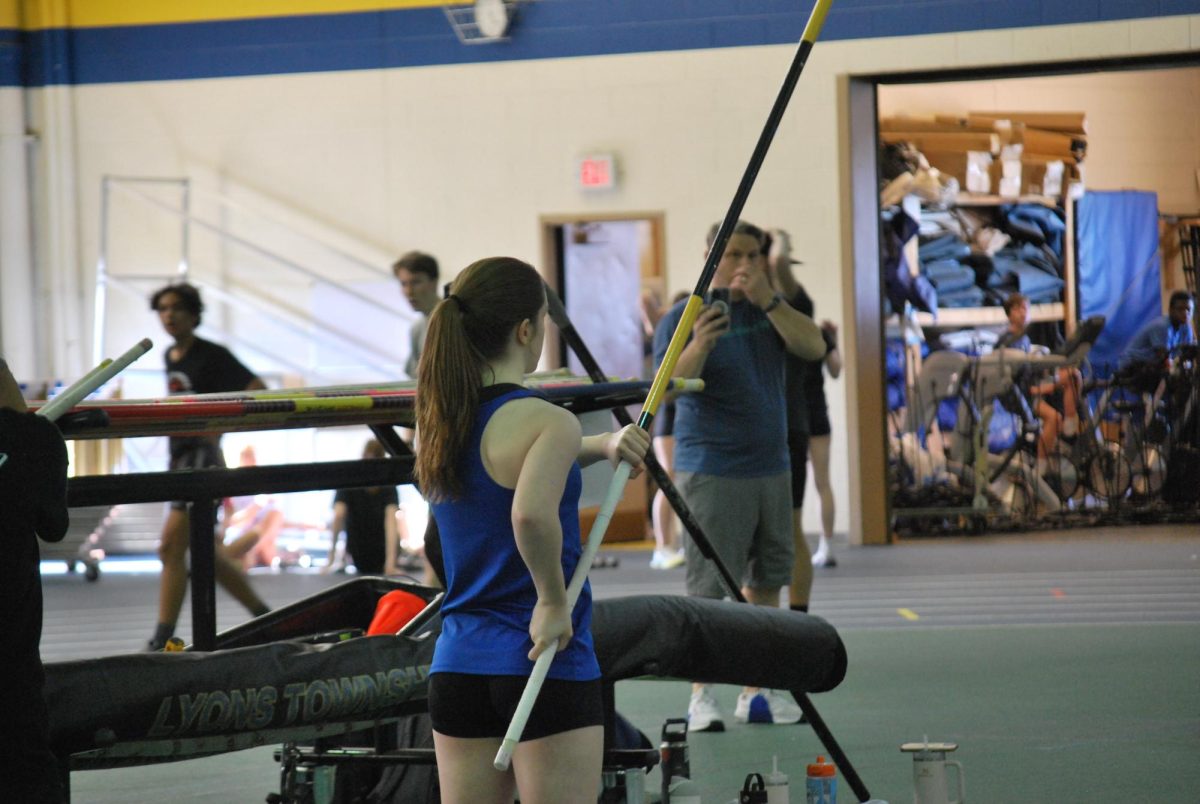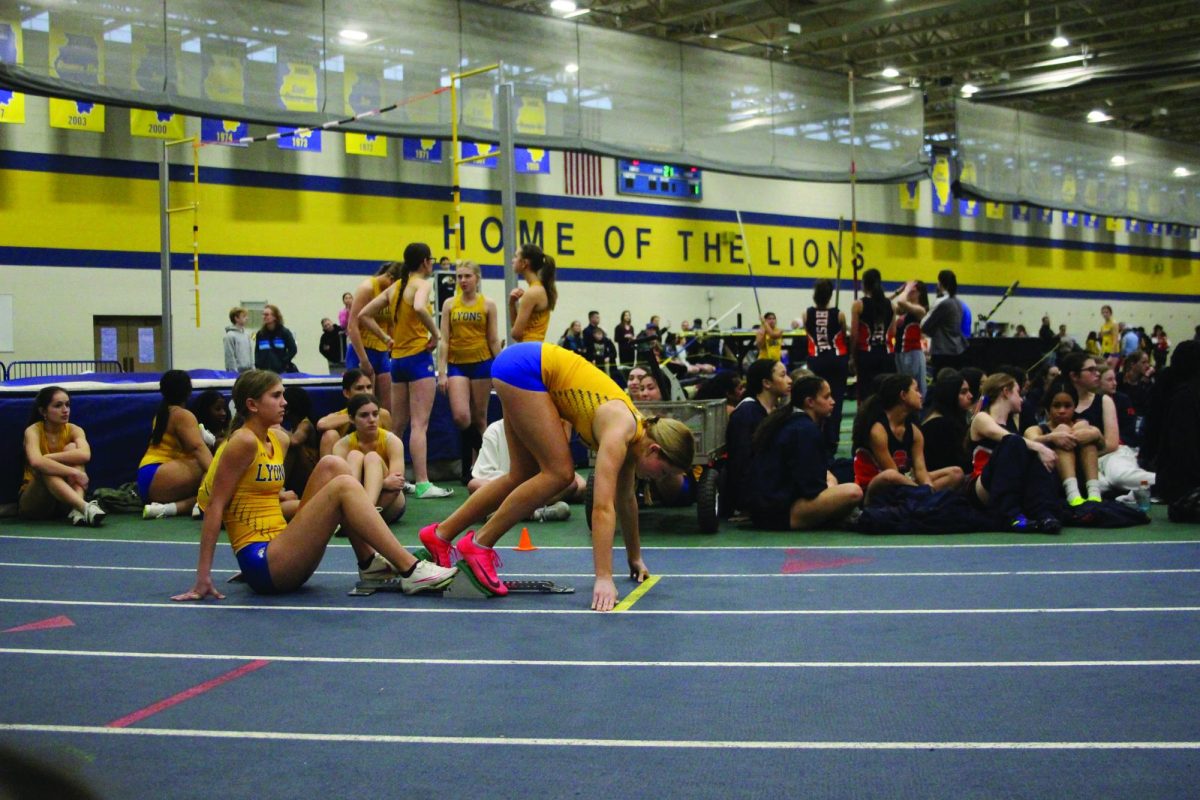Both boys and girls track not only involves running, but also offers different events like pole vaulting, high jumping, and hurdling. One of the unique aspects of these events is that they are competed in indoor and outdoor seasons, creating a significant change in performance and mindset for the participating athletes.
“In general, outdoor [season] has more complications,” high jumper Annie Henja ‘24 said. “Your jumps are affected by environmental factors. If it’s cold, you most likely won’t jump your best due to your muscles freezing up.”
Mental factors also play a part in the difference in performance, she said. Since outdoor is later in the season, some jumpers may become burnt out or lose motivation by the time the season comes around. On the other hand, some jumpers might become injured from the stress of the indoor season and either might be unable to compete or perform to the best of their ability.
Boys high jumper Ryan Gugliuzza ‘24 also experiences complications like these when transitioning from indoor season to outdoor season. For him, the unpredictable weather during the outdoor season affects the way he warms up and prepares for meets, he said. During practice, feeling less pressure makes jumping easier when it truly counts.
“High jump is a very technical sport,” he said. “In order to have a successful jump the athlete has to perfect their approach, their last two steps, and their technique in the air to be able to go over the bar.”
In regards to technique, hurdling is an event that is quite demanding, and mental blocks can easily form, Ellie Cushing ‘24 said. Learning to trust yourself and look past the hurdles can be very difficult, and for this event specifically, the change from indoor and outdoor season is drastic and takes the team a few weeks to warm up to the transition.
“There’s a big difference between indoor and outdoor season when it comes to hurdles,” she said. “The first difference is that the 55m race we run indoors suddenly becomes 100m outdoors and there’s twice as many hurdles to get over, it can be a really daunting change.”
On top of that, aspects like wind and rain can affect traction which then requires more careful practice to avoid slipping, boys hurdler Anthony Pearson ‘26 said. With the longer distance and increased hurdles, the competition becomes more challenging.
“The most challenging aspect of hurdling for me is finding the right balance in the number of steps – not too many and not too few – as it directly affects my time,” he said. “Overall, the fear of hitting the hurdles and falling is a common challenge among hurdlers.”
The fear of injuries is also common for athletes who pole vault, Leigh Ferrell ‘25 said. For her, this year is going to be significantly different as she isn’t competing in long-distance running anymore. Because of this, she will have more time to focus on pole vault and will hopefully exceed her PR of 11.25-feet to reach her goal of vaulting 12 feet.
“The hardest part about vaulting for me is not psyching myself out,” she said. “It can be really scary when you’re just sprinting down a runway at a really high bar because a lot can go wrong and you don’t wanna get hurt since that could ruin your whole season.”
Similar to Ferrell, boys pole vaulter Kalin Burns ‘24 struggles with the occasional mental block. When competing in the outdoor season, the vaulters experience a harsher effect of the wind than most other events, he said. This year, the team has already improved a lot, which offers a lot of excitement and anticipation for the future.
“The most fun thing about vaulting is getting to know everyone on a very personal level,” he said. “Being a senior helps me mentor the newer people who may have just joined and want to try something new.”
The next girl’s home meet is on April 16 against Downers Grove South High School, and the next boy’s home meet is on May 1 against York and Hinsdale Central.



















![Movie poster for '[Rec]" (2007).](https://www.lionnewspaper.com/wp-content/uploads/2023/04/rec-640x900.jpg)




